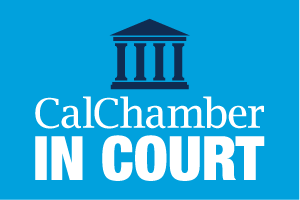In this episode of The Workplace podcast, CalChamber Executive Vice President and General Counsel Erika Frank and employment law expert Jennifer Shaw discuss best practices for keeping up with COVID-19 guidelines.
This podcast was recorded on November 9, before Governor Gavin Newsom moved most California counties to the purple tier on Nov. 16. Listeners should be aware that given the unpredictability of the COVID-19 pandemic, information shared on this podcast episode may change at any time.
Update to ‘Close Contact’ Definition
The amount of COVID-19 guidance that local, state and federal agencies have released is vast, and even as a professional who follows these updates closely, staying abreast of all this information is challenging, Shaw says.
Even government agencies seem to be struggling with keeping pace with all the changes, and finding ways to reach people with the information, Frank adds.
At the moment, Shaw says, anecdotal evidence shows agencies in California are being pretty forgiving to employers who unknowingly violate ordinances but who are trying their best to keep up with all the rules.
At the time of this podcast recording, the presidential election has just ended and COVID-19 cases are starting to rise in California, Frank tells listeners.
The U.S. Centers for Disease Control and Prevention (CDC) at the end of October updated its definition of “close contact” in its contact tracing guidelines, but it is not yet known if state agencies will adopt the change, Frank explains.
The reason the CDC updated the definition of “close contact” is to more accurately determine who must be quarantined. Per the update, any individual within 6 feet of an infected person for a total of 15 minutes or more is considered to have been in “close contact” with a COVID-19-positive person, Shaw explains.
Often, these changes are based on agencies’ understanding and interpretation of the science of how the COVID-19 virus works, she points out.
“There is so much that is unknown,” Shaw says.
Importance of Following Local Agencies
Shaw stresses that it is of utmost importance that employers find out what their local health and public agencies want them to do. The CDC, California Department of Public Health (CDPH) and California Governor’s Office have all said that they defer to local regulators.
“So if there is one thing you really got to keep on top of is what your local city and counties are doing because they talk about the CDC’s rules, they talk about the CDPH…they talk about those things, and so it’s the best way for you to keep track of what is going on, because the definitions are going to keep changing,” Shaw explains.
Best Practices
As the weather is getting colder and the holiday season is approaching, now is the time to keep tabs on new changes, Frank tells listeners.
She recommends that employers establish a daily morning routine or set up a weekly Outlook reminder to check for updates from their local health departments. Also, there is no reason to be on your own; designate someone within the organization to be in charge of waking up every day to think about this issue and check government websites for COVID-19 updates.
Shaw reminds employers to not lose track of why everyone is doing all this. The ultimate goal is to try to prevent the spread of COVID-19 and protect your workers as much as you can.
While following the government’s guidance does not guarantee that your workers will not contract COVID-19, Frank stresses that employers have an obligation to try the best they can.
“If you hear on the news of a guideline changing, check it out. Take a look at it. If you have questions about it, contact the CalChamber’s Labor Law Helpline, contact Jennifer [Shaw], contact your counsel,” Frank says. “Just be diligent.”

